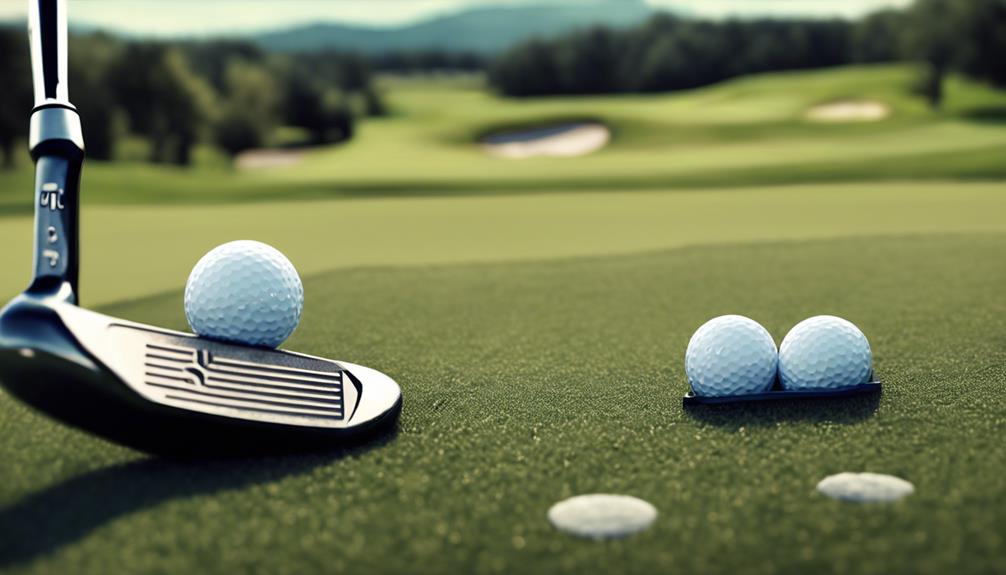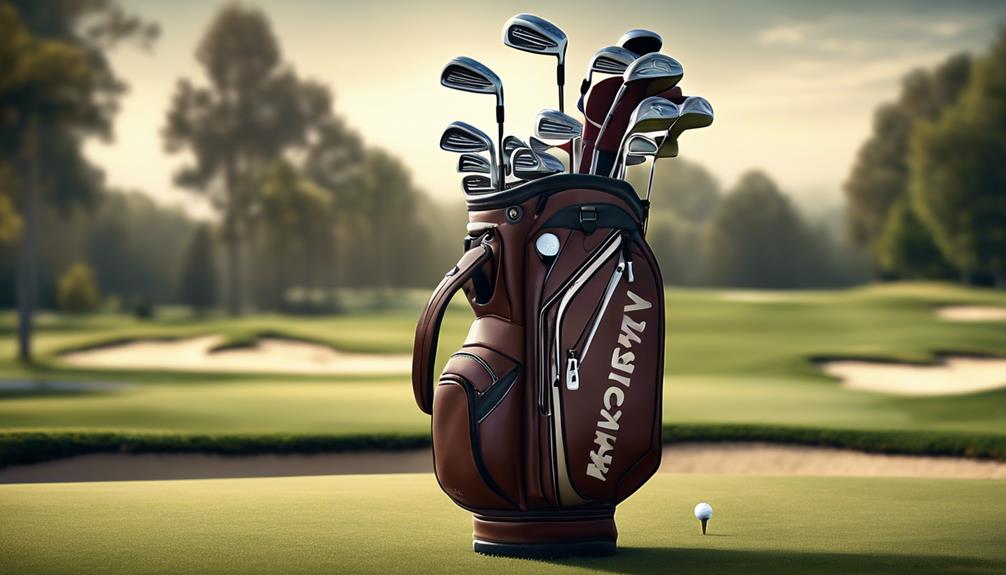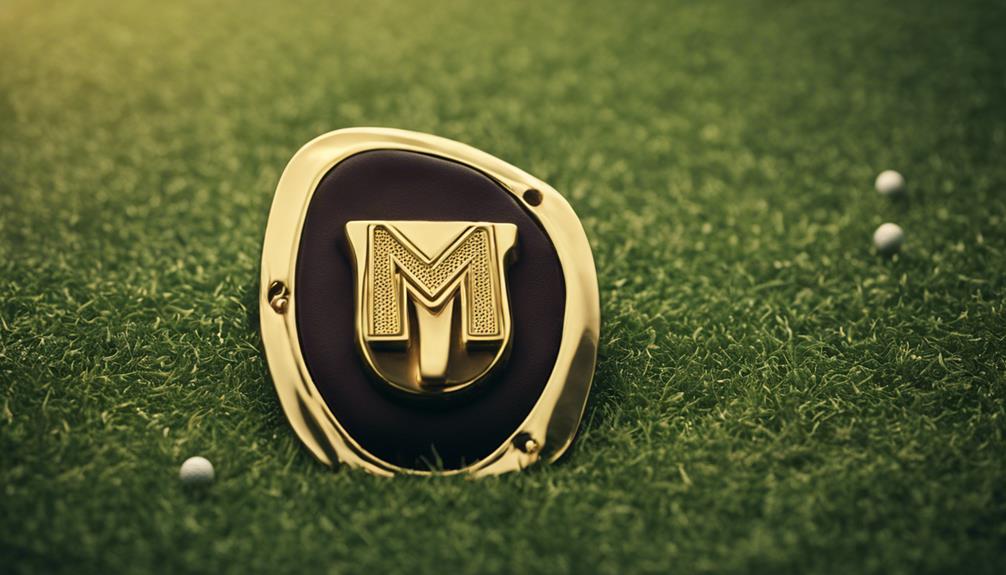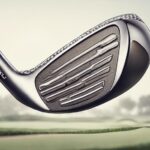- 7 Top Flite Golf Clubs XL for Improved Performance - September 28, 2024
- Top Flite Golf Clubs: Top 5 Reasons to Choose Them - September 28, 2024
- Top 3 Golf Club Fitters for a Perfect Swing - September 28, 2024
When you see the label 'M' on a golf club cover, it signifies that the putter underneath is a mallet putter, designed to provide stability and forgiveness on off-center hits. This type of putter features a larger head compared to blade putters, making it a popular choice among golfers for improved alignment and accuracy. As you explore the world of golf clubs, understanding the differences between mallet and blade putters can greatly impact your gameplay and shot effectiveness. By distinguishing between these labels, you'll be well on your way to revealing the full potential of your golfing equipment and taking your skills to the next level.
Key Takeaways
- The 'M' label on a golf club cover indicates a mallet putter, distinguishing it from blade putters.
- Mallet putters have a larger head compared to blade putters, offering stability and forgiveness on off-center hits.
- The 'M' designation is popular among golfers for improved alignment and accuracy in their putting game.
- Mallet putters often feature design elements like sightlines, dots, or lines to aid in face alignment and improve putting consistency.
Understanding Golf Club Numbers
When selecting a golf club, you need to understand the numbers on the club, as they directly correlate to the loft angle, which greatly impacts the ball's trajectory and distance.
These numbers, typically ranging from 1 to 9, are more than just a label – they indicate the club's intended use and performance.
Lower numbers, like 3-iron, signify less loft, ideal for longer shots that require more distance. Conversely, higher numbers, like 9-iron, mean more loft, suitable for shorter, higher shots.
Familiarizing yourself with these numbers is essential, as it allows you to make informed decisions about which club to use in various situations on the course.
A deeper understanding of golf club numbers empowers you to select the right club for the job, resulting in more accurate and controlled shots.
Mallet Putter Characteristics
As you explore mallet putters, you'll notice their design features a larger head, which enhances stability and alignment during your stroke.
You'll also find that many mallet putters come with face alignment options, such as inserts or visual aids, to improve your accuracy and consistency.
Mallet Putter Design
What sets mallet putters apart from their blade counterparts is their distinctive design, which features a larger, wider clubhead that boosts stability and forgiveness on off-center hits. As you explore mallet putters, you'll notice that their design often includes alignment aids, such as sight lines or dots, to help you aim accurately at your target.
Here are some key design features that make mallet putters stand out:
| Design Feature | Benefit |
|---|---|
| Larger, wider clubhead | Increased stability and forgiveness on off-center hits |
| Alignment aids (sight lines, dots) | Improved accuracy and aim |
| Higher moment of inertia (MOI) | Reduced twisting during stroke, maintaining direction |
| Adjustable weights | Customizable feel and balance |
| Rear-weighted design | Smoother stroke and better distance control on longer putts |
With these design elements, mallet putters provide a unique set of benefits that can help you improve your putting game. By understanding the characteristics of mallet putters, you can make an informed decision about whether this type of putter is right for you.
Face Alignment Options
By incorporating various face alignment options, mallet putters enable you to fine-tune your aim and achieve a more consistent putting stroke. As you explore different mallet putter designs, you'll notice a range of alignment features that cater to individual putting styles.
Here are some common face alignment options to evaluate:
- Sightlines: Visual cues that help you align your putter face with the target
- Dots or lines: Alignment aids that provide a clear reference point for your putting stroke
- Rail-like features: Raised edges or rails that help you maintain a consistent face angle
- Micro-targets: Small, circular targets that assist with precision alignment
When selecting a mallet putter, assess the face alignment options that best suit your putting stroke and personal style.
Golf Club Loft and Distance

You'll notice that golf clubs with varying loft numbers serve distinct purposes, with higher lofted clubs designed to produce higher shots over shorter distances, and lower lofted clubs engineered to achieve longer distances with a lower launch angle.
As you explore your golf club set, you'll find that understanding the loft of each club is essential for maximizing performance on different types of shots. Golf club loft determines the trajectory and distance the ball will travel after being struck, making it important to select the correct club based on its loft.
Higher lofted clubs, such as wedges and short irons, are ideal for approach shots to the green, where precision and height are key. Conversely, lower lofted clubs like drivers and long irons are designed for longer distances with a lower launch angle, making them perfect for long fairway shots.
Iron and Wood Club Differences
As you explore the distinctions within your golf club set, iron clubs and wood clubs emerge as two categories with unique design and performance characteristics that set them apart. Understanding these differences is essential for selecting the right club for your shot.
Here are the key differences between iron and wood clubs:
- Iron clubs have smaller, angled club heads for precision shots, while wood clubs feature larger, circular club heads for longer distances.
- Irons are used for shorter-range shots (under 200 yards), whereas woods are preferred for longer shots (over 200 yards).
- Iron clubs have a higher loft, resulting in higher trajectories, while wood clubs have a lower loft, resulting in lower trajectories.
- Wood clubs are made from lighter materials for increased swing speed and distance, while iron clubs are constructed from heavier metals for better control and accuracy.
Club Selection for Shot Types

Frequently, golfers find themselves struggling to select the right club for a particular shot, which is where understanding the type of club associated with the 'M' label becomes essential. You need to know what type of club you're reaching for to execute the shot you're planning.
When you glance at your club cover, the 'M' designation tells you it's a mallet putter, designed for stability and accuracy. This knowledge helps you choose the correct club for your shot, whether it's a putt or a drive.
As you navigate the course, you'll encounter various shot types, each requiring a specific club. Mid-sized clubs, for instance, are ideal for shots that need more height and distance.
By familiarizing yourself with the label meanings on your club covers, you'll be able to quickly identify the right tool for the job. This streamlined process of club selection will ultimately impact your shot effectiveness and overall gameplay.
Putting It All Into Practice
With a solid understanding of club selection and the significance of the 'M' label, it's time to put your knowledge into action by selecting the right putter cover for your mallet-style putter.
As you know, mallet putters have a larger and more stable head, which requires a cover that fits snugly to prevent scratches and damage.
To guarantee you're getting the most out of your putter cover, follow these best practices:
- Choose a cover specifically designed for mallet putters to guarantee a proper fit.
- Regularly inspect your cover for signs of wear and tear, and replace it as needed.
- Consider a cover with a magnetic closure to keep your putter secure.
- Select a cover that reflects your personal style, with various designs and colors available.
Mastering Golf Club Knowledge

To master golf club knowledge, you must understand the nuances of putter design and the significance of labels like the 'M' designation, which can greatly impact your game.
The 'M' on your golf club cover typically indicates a mallet putter, distinguishing it from blade putter covers. Mallet putters offer more stability and forgiveness on off-center hits, making them popular among golfers seeking consistency in their putting. Understanding the type of putter you have is essential in selecting the appropriate headcover, ensuring a proper fit and protection during transport.
When choosing a headcover, look for high-quality materials that provide durability and protection from scratches and damage. Many golf club covers, including those with the 'M' designation, are designed with functionality and aesthetics in mind.
Using the correct headcover not only protects your clubs but also reflects your personal style on the golf course. By recognizing the 'M' designation and understanding the characteristics of mallet putters, you'll be well on your way to mastering golf club knowledge and taking your game to the next level.
Frequently Asked Questions
What Does M Mean in Golf?
When you focus on M in golf, it's about mastering swing mechanics, where M represents the midpoint between your backswing and forward swing, ensuring a smooth shift and optimized power generation for a precise shot.
What Does M Mean on a Wedge?
Since 70% of golfers struggle with consistency in their short game, you'll want to understand that the 'M' on a wedge typically indicates a mallet-style design, offering a larger, more forgiving club head for improved control and accuracy.
What Is M Flex Golf Club?
You're looking for the perfect fit; M Flex golf clubs offer a medium flex rating, providing a balance of stiffness and flexibility for your moderate swing speed, allowing you to optimize control and distance among flex options.
What Is an M1 Golf Club?
"Practice makes perfect" rings true when you're wielding an M1 golf club, designed to optimize your performance with its adjustable features, high MOI, and advanced materials, allowing you to master distance control and accuracy with every shot.
Conclusion
You've now revealed the secrets of golf club covers, and 'M' is more than just a mystery letter – it's a gateway to mastering your short game.
With a deep understanding of club numbers, putter characteristics, and loft and distance, you'll be a genius on the green.
Don't be surprised if you start sinking putts like a pro, because with this knowledge, you'll be a million miles ahead of the competition!




